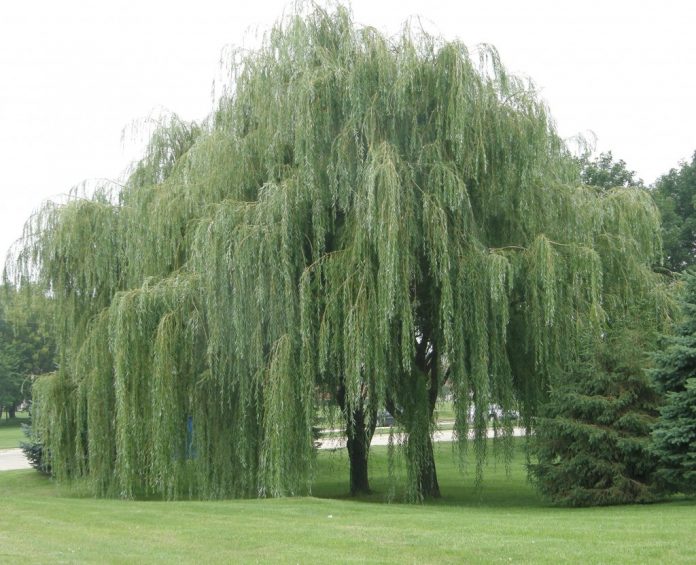Thousands of years before the first European settlers came to the continent of North America, ancestors of mankind have relied on trees for sustenance, survival and well-being. Even today, the native North American trees will meet our basic needs (not to mention introduced species), when we learn how to grow them, process them and prepare them.
In this sense, let us look at some North American survival trees that are most useful:
1. Mulberries (Morus spp.)
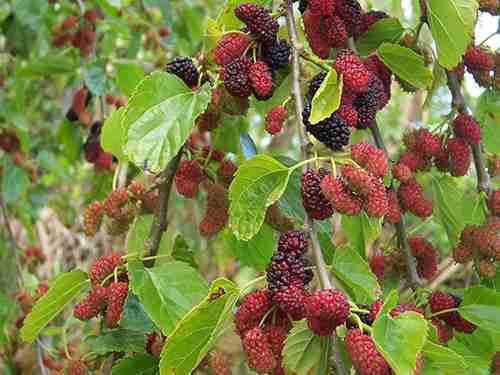
In many parts of North America different species of mulberries are common, both native and introduced varieties. If your area contains no mulberries, consider planting the (especially the endangered North American Red Mulberry (Morus rubra).
Survival uses:
- The delicious, sweet, edible berry of most all species can be eaten raw, made into preserves, dried, or dried and powdered.
- The young shoots and unfolding leaves of most species such as Morus rubra and Morus alba, can be eaten raw or cooked.
- Morus alba has a long history of use by the Chinese for medicine including for treating everything from toothaches to tinnitus, depending on the part used, and modern research has substantiated many of these traditional uses.
- The leaves can serve as a nutritious fodder (forage crop) for livestock.
- A fiber can be obtained from the bark of young stems, which traditionally has been used for weaving clothes or making paper.
2. Basswood/Linden (Tilia spp.)
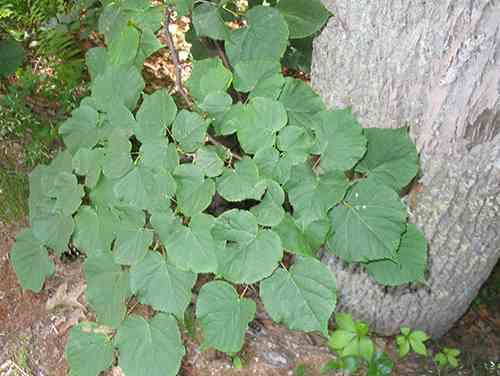
Basswood or Linden are found in rich, often moist soils of woods and bottom-lands and are unique among North American trees for their variety of uses.
Survival uses:
- Young leaves can be eaten cooked or raw. Older leaves can be cooked as greens.
- The sap can be drunk or made into syrup.
- The sweet flowers can be eaten raw or made into tea. Caution: excessive use of the flower may cause heart damage so use sparingly.
- A chocolate substitute can be made by grinding dried fruits and flowers into a paste, though it is not long-lasting without somehow drying or freezing it.
- Through soaking in water and heating, a tough fiber can be obtained from the inner bark, followed through rubbing it on a stick or similar to separate fibers, which can then be used for thread, fine yarn or cordage. Care should be taken not to girdle the tree or limb when harvesting bark on this or any tree.
- The soft wood cut from branches, can be carved and worked to make wooden utensils and furniture.
3. Willow (Salix spp.)
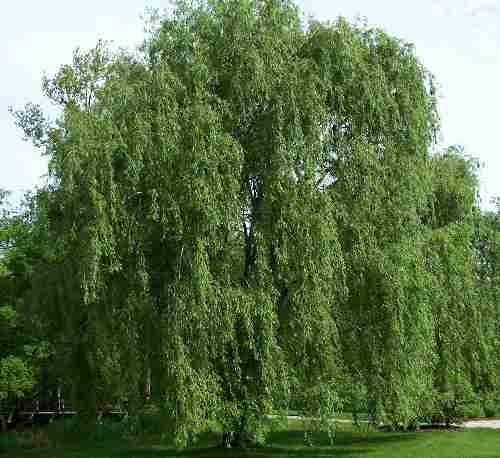
North America has many types of willow, including weeping willow (Salix babylonica) and greenleaf willow (Salix lucida). Usually they emerge in moist soils near swamps, marshes, rivers, or lakes, much the same as the cattails.
Survival uses:
- The fresh bark of all willows contains salicin, which is closely related to aspirin, and can therefore be used as a painkiller or for fevers and headaches.
- Many species have stems that are very flexible and are used in basket making or similar.
- Willows can be coppiced annually, and are therefore useful to have on your property for continual production of woody material.
- The twigs and bark can be boiled to extract rooting hormone which can then be used to root other plants.
- Some species, such as weeping willow, have an edible inner bark that can be dried, and ground into a powder for later use in cereal or bread (though it is bitter and considered a famine food); and their young shoots and flower buds are edible cooked.
4. Walnuts (Juglans spp.)
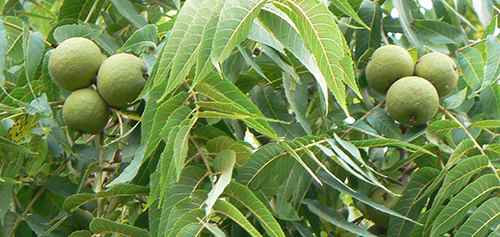
Walnuts, including black walnut (Juglans nigra) and California walnut (Juglans californica) can be an extremely useful tree if you are lucky enough to find them.
Survival uses:
- The nuts are a delicious and nutrient rich food with a sweet, rich flavor. They ripen in late autumn and can be de-hulled, dried, and stored in a cool place where they will keep for up to 6 months. Roasting extends storage times.
- A brown dye can be obtained from the nuts and their husks, as well as the bark, leaves and stems.
- Husks can be made into high quality coal through burning with low oxygen, and coal can then be used to filter water.
- Substances obtained from husks and other parts of the tree contain the toxin juglone, which can be used as an insecticide or herbicide (though it will kill the life in the soil and most plants, not just weeds).
5. Oaks (Quercus spp.)
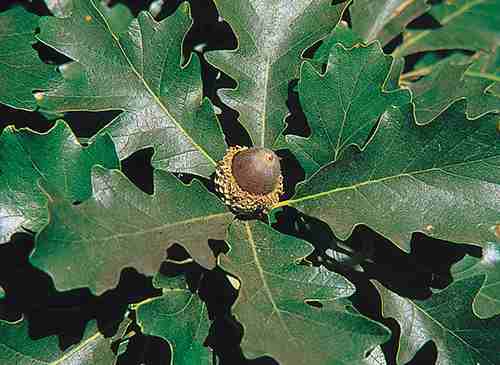
Different species of this common tree our found everywhere in North America, from the prairies, to dense dry woods, gravelly ridges and sandy plains.
Survival uses:
- The highly nutritious nut can be eaten raw (in some species) or cooked, it is typically sweet if edible. Most Native American tribes used the oak nuts (acorns) as a staple crop. Any bitter tannin must be leached out by rinsing the dried, ground up meat in water thoroughly. Traditionally, seeds were buried overwinter in boggy soil, and were then eaten after germination. These can also be dried and powdered as flour for use.
Related: Planning Your Homestead Orchard: Benefits of Dwarf Trees
6. Pine (Pinus spp.)
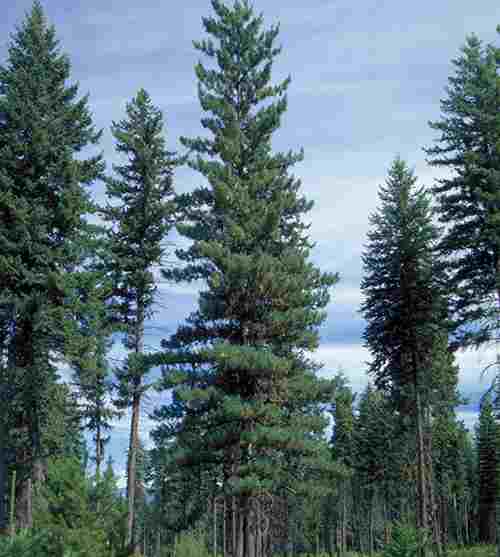
There are many species of pine in North America found across the continents, often making up a large percentage of the trees in a forest.
Survival uses:
- Seeds are edible, though most species’ seeds are small (Sugar Pine or Pinus lambertiana has a larger seed though, for example).
- The fresh needles of many species can be brewed into a tea rich in vitamins, especially vitamins C and A.
- A candy can be made by boiling new shoots of some species in syrup.
- The inner bark of some species can be eaten raw or cooked and has a sweet flavor. It can be dried and ground into a powder to be used as a thickener or in bread.
- Pitch obtained from the resin can be used to waterproof boats, containers, and as a preservative.
- Pine tar can be obtained by cooking the wood in a closed container. This is an excellent, dark-colored wood preservative.
Related: Trees That Can Be Tapped For Sap And Syrup
7. White Birch (Betula papyrifera)
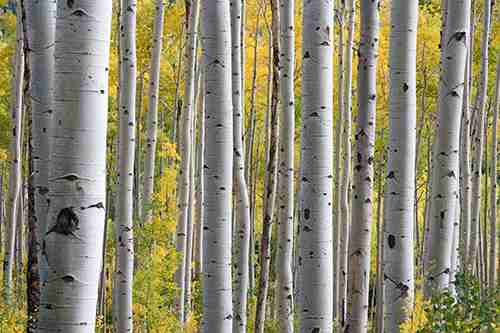
Found in a wide range of conditions throughout North America, this magnificent tree is famous for many, many uses.
Survival uses:
- The inner bark (best in the spring) is edible raw or cooked.
- The sap raw or cooked is a sweet drink and can be made into a syrup or fermented to make beer or vinegar.
- The very young leaves, shoots and catkins are eaten raw or cooked.
- A tea can be made from young leaves and root bark.
- The outer bark was traditionally used in making cups, canoes, shingles and buckets. Be careful to remove only the thin outer bark so as not to kill the tree.
- The outer bark can be used to prevent snow blindness by cutting a strip and placing it over the eyes with the natural openings used as holes to see through.
- The bark is an excellent tinder, burning easily and quickly.
8. Cherries (Prunus spp.)
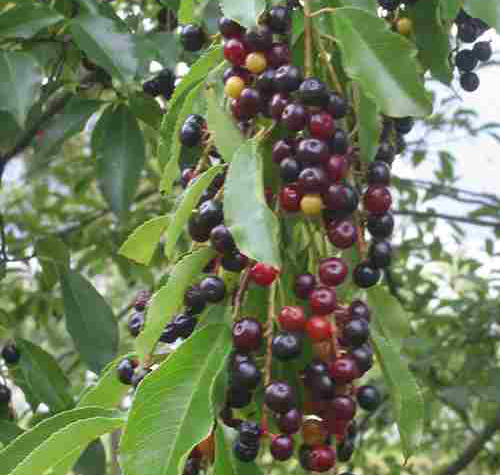
Cherries can be found across the continent on most types of terrain and are useful for more than just their nutritious fruit.
Survival uses:
- Abundant fruit is edible raw or cooked and many varieties are sweet, though just as many are sour, bitter, or worse.
- Although most cherry seeds are poisonous, some may be edible if they are not bitter.
- An extract from the bark has been used commercially as flavoring for drinks, treats and baked goods, particularly from the rum cherry (Prunus serotine).
- A green dye can be extracted from the leaves.
9. Hackberry (Celtis spp.)
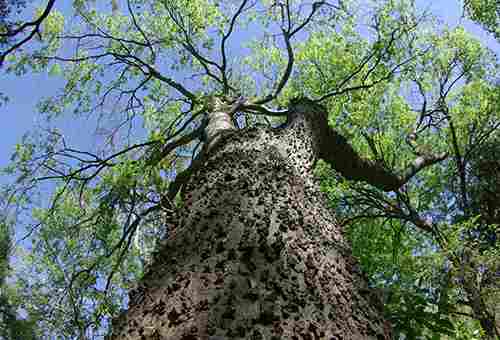
Though not the continent’s most famous tree, if you’re lucky enough to come across hackberries, you’re in for a treat. In Eastern North America, common hackberry (Celtis occidentalis) is found in various types of soils mainly along riverbanks, while sugarberry/sugar hackberry (Celtis laevigate) is found further south, down to Florida and Texas.
Survival uses:
- The fruit is edible, sweet and delectable. It contains one single edible seed, though in some trees, it may be too hard to bite, so be careful. The fruit and seed can be crushed to form a tasty protein-rich treat. fat and carbohydrates. Over several months the whole fruit can be preserved simply by putting it in a dry position in a paper bag out of heat. When the leaves fall, the berries are more quickly gathered by putting a tarp or blanket under the tree and shaking the branches.
10. Honey Locust (Gleditsia triacanthos)
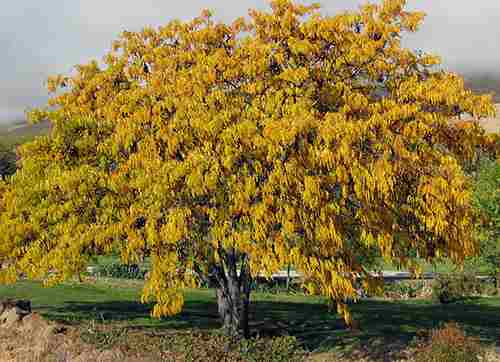
Found natively in eastern North America, these trees are also planted elsewhere throughout the continent in a variety of conditions.
Survival uses:
- The seed is edible raw or cooked, tasting like raw peas, and they are high in protein and carbohydrates.
- The pulp of the seedpods is sweet and can be eaten raw or made into a sugar.
- Tender young seedpods are edible cooked.
- The pods are great fodder for livestock.
- The wood is hard, rot resistant and shock resistant, and can be used for fence posts and tools.
Either you want to learn to survive in an emergency situation or simply for other reasons to become more self-sufficient, trees are an invaluable tool for survival. Keep in mind that the above uses are just a fraction of the many uses for each of the mentioned trees, as a detailed list of uses for survival could easily fill a whole article (or book) for each tree. Let this be a starting point, then, stay tuned for future articles for your continued study of these and the many other species of trees which grace our terrestrial landscapes.


